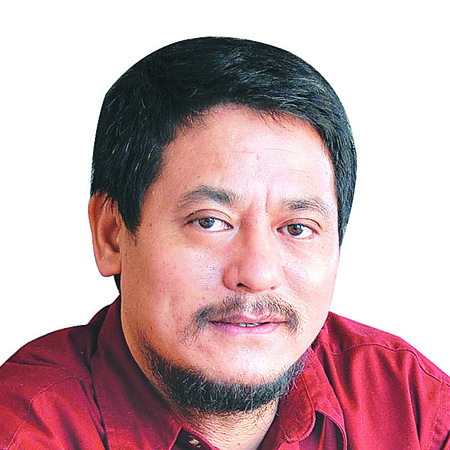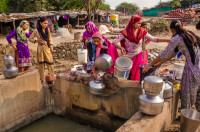Opinion
Partial financial inclusion
The North Eastern Region truly remains a laggard in the entire economic reform process
Mahendra P Lama
India plunged into structural adjustment programmes and substantial economic reforms mostly in the 1990s. Reasons attributed to these far reaching policies were deepening poverty and inequality, macro economic instability, ‘Hindu growth regime’, incongruent financial and capital market, public sector–led industrial deceleration, staggering infrastructure deficit, poor governance and sharp regional disparities. The adoption and implementation of these reforms, largely carried out under the aegis of the World Bank and the International Monetary Fund, vary across the 36 states and union territories in India in terms of time schedule, sectoral coverage , intensity, sustainability, political commitment and people’s acceptance. The impacts of these reforms have also been varying in terms of its reach, visibility, nature and extent. There are states where the second generation reforms are now being implemented as against some geographies and societies where even the first generation reforms have not reached.
A critical area of focus has been the issues related to implementation of financial inclusions. This primarily stresses on the development and well being of unserved and under-served sections of the population by giving them easy access to banking facilities. The aim is also to mobilise savings from the lowest social and economic echelons of the society and redeploy them for larger economic growth. This is expected to expand the resource base by developing a culture of savings among rural population and also train the mass to understand the basics of financial services.
The strategy
A well designed strategy was floated that crystallised sound inter-linkages among financial inclusion, financial literacy and consumer protection. Under this, developing adequate physical and digital infrastructure to generate adequate access points and connectivity; designing suitable regulatory framework that balances innovation and risks; and doubly enhancing the level of financial awareness to enable prospective and new customers to make suitable choices have been the top priorities. The Three -year Financial Inclusion Plan (FIP) initiated in April 2010 made self-set targets in terms of bricks-and-mortar branches in rural areas, indicating coverage of unbanked villages with population above 2,000; deployment of business correspondents and the use of electronic/kiosk modes for provision of financial services rather than making it mandatory. The opening of no-frill accounts and conscious propagation of financial literacy and digital literacy campaigns and mandatory opening of the 25 percent of the total number of banking outlets in the Unbanked Rural Centres really provided the initiative a big boost.
Among the attractive instruments used have been Kisan Credit Cards, General Credit Cards, RuPay domestic debit card introduced in 2012 by the National Payments Corporation of India. Prime Minister’s Jan Dhan Yojana of 2014 created a better digital infrastructure and enabled faster penetration of debit card culture.
There are several indicators to show thatthe financial inclusion initiative has started gaining momentum. For instance, the account ownership data published by World Bank’s The Global Findex Database 2017 shows that the percentage of adults with an account in India has now reached at par with China at 80 as against 50 of Bangladesh, 45 of Nepal and 21 of Pakistan. India’s achievement seems to be qualitatively better as within this adult accounts group, the gap between male and female and rich and poor is 6 and 5 percentage points respectively as against China’s 8 and 20. During the 2010-2018 the number of bank branches in villages increased from 33378 to 50805; number of basic savings bank deposit account (BSBDA) from 73 million to 536 million, deposit in BSBDA from Rs55 billion to Rs1121 billion; number of business correspondence from 34174 to 515317; and its Information and Communication Technology related transaction from Rs7 billion to Rs4292 billion. By May 2018, the accounts opened under the Prime Minster’s Jan Dhan Yojana alone reached a whopping 316 million with accumulated deposit of Rs812 billion and 238 million debit card issues.
In the measurement of financial inclusion, CRISIL—a global analytical company providing ratings—developed two indices in 2013 viz, Inclusix Scores and Inclusix Ranks. The indices took into consideration branch penetration, deposit penetration, credit penetration, and insurance penetration. Both these indices show that all India score of financial inclusion jumped from 40 percent in 2011-12 to 58 in 2015-16, and finally to 62 percent in 2017-2018.
The highest ranked districts with 100 Inclusix Scores are Chikmagalur, Dharwad, Hassan, Shimoga in Karnataka; Alapuzha, Ernakumum, Kottyam, Pathnamthitta, Thrissur in Kerala; Khurda in Orissa; Mumbai in Maharashtra; Karaikal in Puducherry; West Tripura in Tripura; and Kolkata in West Bengal. It revealed that in the bottom 50 of the 666 districts, 28 districts are in the North East region (NER) of India, the lowest being Kurung Kumey of Arunachal Pradesh with 5.2 Score. Further 11 lowest ranked districts are also in the North Eastern Regio spread over Arunachal Pradesh, Meghalaya, Manipur, and Nagaland.
These statistics clearly establish that the North Eastern Region truly remains a laggard in the entire economic reform process. There are several factors attributed to this including historical neglect of the region, conflict and instability, geographical constraints, underdeveloped infrastructure and inadequate institutions and human resources. More seriously, government as the single and predominant development agency has done more harm to the nascent markets and other serious structural constraints. The secondary and tertiary sectors remain just rudimentary. This has led
to low level of investment activities as reflected in the very low credit/deposit ratio. All these were buttressed by a security discourse that triggered low level of confidence.
Dismal Financial Literacy
A dismal level of financial literacy despite a relatively better literacy rate and talented youth population is a key stumbling block.
The hope really lies in meticulously and transparently implementing the National Strategy for Financial Inclusion that urged banks to reach out to the masses, and offerbanking services to adopt an innovative and participatory approach. The instrument of hub-and-spoke has started delivering services. Under this the financial literacy camps are organised at the block level mainly by the NGOs. They set up Centres of Financial Literacy (CFL) as hubs for training, learning and creating trained human resources from communities within the block.
Anganwadi teachers, Asha workers and self-help group leaders, farmers federations, panchayati raj institutions and health workers act as the Change Agents (CAs). These CAs drive outreach in their respective communities and effectively use Digital Financial Literacy Vehicle containing financial literacy material, audio/ video. And these trained human resources become the spokes to further propagate the project. By March 2018, 1,395 CFLs were operational and 0.13 million financial literacy related activities were conducted. This phase of reaching reforms at the vulnerable grass root level is a formidable challenge to both the political class and civil society.
- Lama served as Chief Economic Adviser in the Government of Sikkim and also contributed to North East Region Vision 2020 document.




 18.12°C Kathmandu
18.12°C Kathmandu










